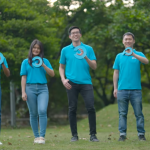Omnicom Media Group Asia Pacific’s (OMG APAC) latest research titled ‘Unlocking Gamers in Asia Pacific’ reveals not everyone in Malaysia who plays games consider themselves to be gamers. Of the 1,000 respondents surveyed, 36% who play either do not consider themselves to be gamers or are unsure. This is even more prevalent among 45 to 54 year olds where only 47% consider themselves to be gamers.
These respondents believe gamers are specifically associated with the types of devices used and the time spent on gaming. 55% of them do not identify with the ‘gamer’ label because they play only on smartphones and 43% feel that they do not play long enough. This is also reflected in the length of typical gaming sessions – one to two hours on weekdays and three to four hours on weekends.
Overall, 58% of the 1,000 respondents game daily. 93% of them are on mobile while PC and consoles account for 34% and 26%, respectively. After work/school and holidays account for most preferred occasions of gaming, with nearly three quarters of respondents ranking these on top of their list.
One of Malaysians’ most significant motivations for gaming is to escape from reality and for PC and console gamers, this is linked to the gaming experience and quality. This insight is unsurprising as this group of gamers prefer these platforms for the quality of the games (83%), the availability of larger screens (56%), and the platforms’ competitiveness (52%).
Although Malaysians would like to spend more time gaming, they cite time constraints and quality as two of the biggest impediments that keeps them away. It is therefore crucial for brands to make their gaming integrations low in time commitment, simple, and less frequent.
The global gaming market is expected to generate $189.3 billion this year, according to Newzoo. In the region, Malaysia has caught the eye of video game developers, with companies such as Sony Interactive launching PlayStation Studios Malaysia and Bandai Namco setting up a local presence. Additionally, the Malaysian government recognises the importance of the gaming industry and the opportunities it presents, having hosted the Level Up KL 2023 conference for Southeast Asian game developers.
These indicate that the gaming industry is not losing steam in Malaysia, and is a sector brands and marketers should keep an eye on.
Kiron Kesav, Chief Strategy Officer, Omnicom Media Group Malaysia, said, “Ultimately, it is important for the brands to not just attempt to merely be a part of the game, but rather identify the world and the proper role that the brand can play. While Malaysians are ready to welcome brands into their gaming environments, brands also need to return the love by adding value to the gamers and finding ways to be a natural part of the game’s natural lore.”
Here are the key tips for marketers wanting to target the gaming sector.
1. Have flexible brand experiences for solo and social gameplay
44% of Malaysians prefer gaming to be a solo affair, enjoying their games by themselves at least twice a week with quiet gaming experiences minus any social interactions. That said, some still long for connectivity as 39% of Malaysian gamers prefer an in-game chat or person-to-person chat.
This preference for a balance between solo gaming experiences and the opportunity to interact on their environments is also reflected in the top game genres that Malaysians indulge in. Genres like tile matching and word/ trivia are amongst the top for mobile and are mostly enjoyed alone, while genres like first-person shooter or multiplayer online battle arena find their takers across mobile, PC, and consoles, enabling them to connect with fellow gamers.
Sports games, massive multiplayer online role-playing games are also a big hit amongst PC and console gamers in Malaysia as these genres open up even more opportunities to connect socially.
Overall, brands are advised to ensure their gaming collaborations have flexibility across various devices. Also, given Malaysians generally prefer gaming to be a solo affair, companies can also ensure integrations are tailored to work for solo players, without the goal of driving or depending on social/communal gaming.
2. Not all communication platforms are equal
Facebook is still the overall preferred platform of choice for gamers to connect on but no longer the only platform of choice, especially for younger audiences. Instagram and TikTok are the top two for those aged 18 to 24. On the other hand, WhatsApp is a strong platform choice among the older groups. Those above 25 also have lesser propensity towards TikTok.
When planning a multi-media gaming campaign, brands are advised to think about their target audience to ensure they are engaged on the right platforms.
Meanwhile, 88% of 18 to 44 year olds within the community are constantly engaged on digital. In fact, 84% of them seek gaming news and updates through gaming publishers themselves, content creators, and word of mouth.
This indicates that these gamers value the social credibility of their sources, be it publishers, creators, or their own circle of friends. Brands can consider the use of influencers and content creators for campaigns targeted at gamers aged 18 to 44. It would also serve brands well to identify a platform-specific approach to ensure a more tailored effort in helping gamers discover new content.
3. Ensure gamers are interested in your industry
The expectation of credibility and authenticity is increasingly being expected from the brands attempting to engage with this community on their gaming environments. Brands need to understand that not all verticals have an immediate place in the minds of the gamers. In terms of shared interests, verticals like travel, shopping entertainment, and technology have a slight advantage over others in terms of building a presence within the space of marketing on gaming.
Additionally, mobile gaming audiences expect brands to practice moderation and also add value to their lives. In particular, they enjoy and expect to be rewarded for watching ads and for limited time objectives. Malaysian gamers also like brand ads within their gaming experience only if it is a one-off thing.
This preference is shared by PC and console gamers, who are even more sceptical when it comes brand partnerships and ads in their gaming environments. When brands associate with games, they are expected to provide originality, and support the games Malaysians love through gaming events or backing esports teams. Malaysians also have an affinity for brand activations on gaming that would enable them to show off their characters or level up in their gameplay.
Therefore, it is crucial for brands to find a natural place in the gaming environment and adapt their creatives and messaging to the game. When targeting PC and console gamers, brand activations need to be diverse in approach, with gaming integrations being upper funnel-oriented and supportive channels used to drive lower funnel interactions.
The research surveyed 1,000 respondents in Malaysia – 50% male and 50% female. 38% were based in towns, 27% from minor cities, and 25% from major cities. Most respondents were aged 35 to 44 (34%) and 25 to 34 (29%).
Overall, 12,204 respondents in Asia Pacific were surveyed across 13 markets. They are Australia, India, China, Indonesia, Philippines, Malaysia, Singapore, South Korea, Thailand, New Zealand, Taiwan, Hong Kong, and Vietnam. There is an equal gender split between male and female, and slightly more than two-thirds of respondents are aged 25 to 44 years old. The remaining 20% are aged 18 to 24 and 13% aged 45 to 54.
MARKETING Magazine is not responsible for the content of external sites.
After 20 years of evolving technology, shifting market trends, and adapting to changing consumer behaviour, the media landscape has nearly reached saturation.
We’ve optimised to the fullest, providing advertisers with abundant choices across technology, platforms, data-driven marketing, CTV, OTT, DOOH, influencer marketing, retail, etc.
Media specialists have diversified, but with more options comes the challenge of maintaining income growth. The industry is expanding, but revenue isn’t keeping pace.
Now, we’re at a TURNING POINT: time to explore and harness new sustainable revenue streams. While GroupM forecasts a 7.8% global ad revenue growth in 2024, challenges like antitrust regulation, AI and copyright issues, and platform bans persist.
Collaboration is key: partnerships that thrive on synergy, shared values, and aligned goals are becoming increasingly essential.
Hence, the Malaysian Media Conference, in its 20th year, has assembled the partners and players under one roof on October 25 for a day of learning, sharing, and exploring.
REGISTER NOW










